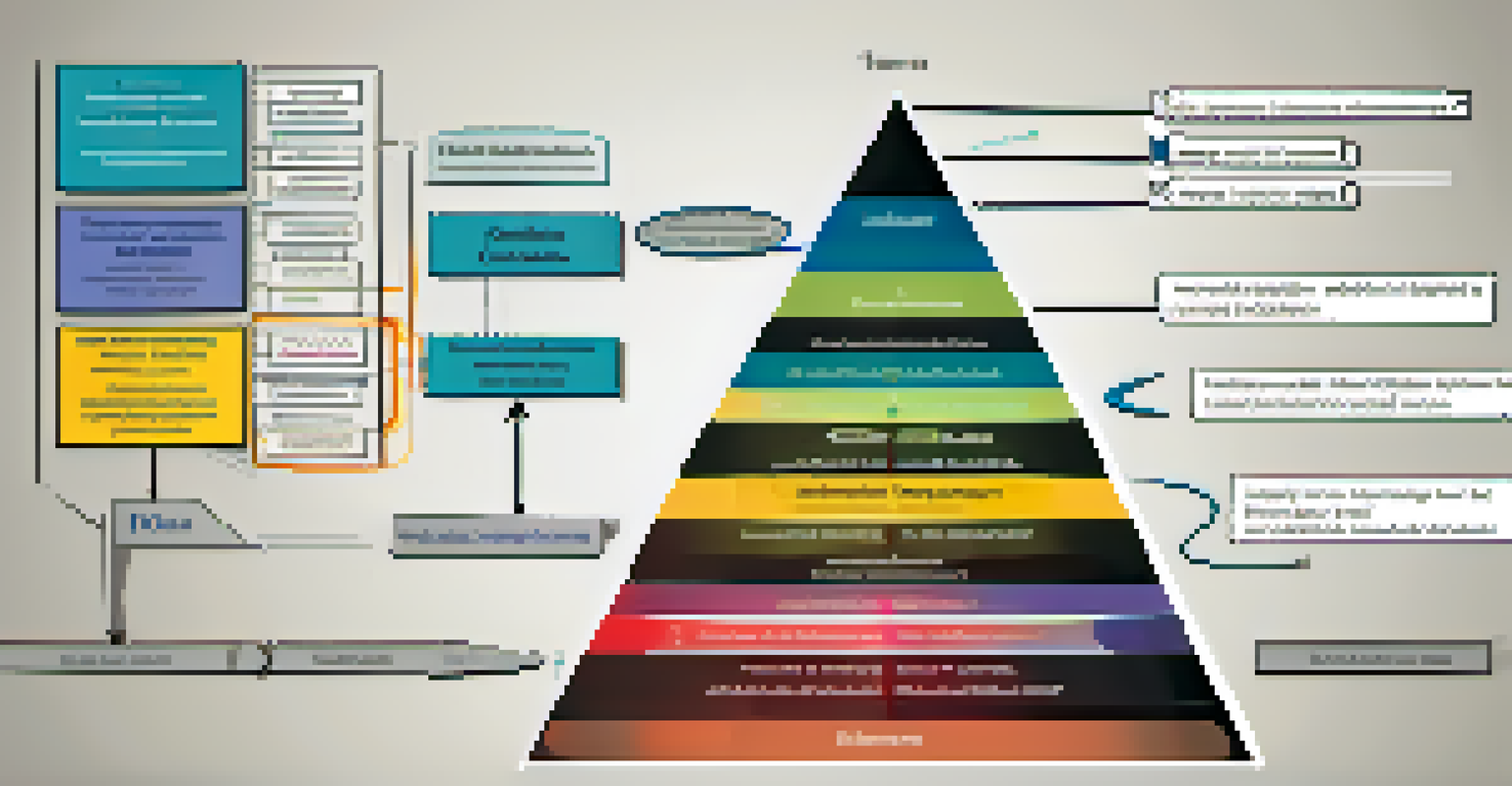Understanding Power Dynamics in Office Relationships

Defining Power Dynamics in the Workplace
Power dynamics refer to the ways in which power is distributed and exercised within relationships. In an office setting, this can manifest through hierarchies, influence, and control over resources or information. Understanding these dynamics is crucial as they can significantly impact collaboration, communication, and overall workplace culture.
The greatest danger in times of turbulence is not the turbulence; it is to act with yesterday's logic.
For instance, a manager has formal authority over their team, which can create a power imbalance. However, informal power can also arise from expertise or social connections, making it essential to recognize both types. This understanding helps employees navigate workplace interactions more effectively.
Ultimately, recognizing power dynamics allows individuals to engage more thoughtfully with their colleagues. By fostering a culture of awareness and respect, organizations can enhance teamwork and productivity, leading to a healthier work environment.
The Role of Hierarchy in Office Dynamics
Hierarchy is a fundamental aspect of power dynamics in most organizations. It establishes clear lines of authority, but it can also create barriers to open communication and collaboration. When employees feel intimidated by higher-ups, it can stifle creativity and innovation.

For example, an employee may have a brilliant idea but hesitate to share it due to fear of judgment from their supervisor. This can lead to missed opportunities for improvement or growth within the company. Encouraging an open-door policy can help bridge this gap and empower all employees to contribute.
Understanding Power Dynamics
Recognizing both formal and informal power is essential for effective workplace interactions and collaboration.
In a healthy work environment, hierarchy should not inhibit collaboration. Instead, organizations should strive for a culture where feedback flows freely, regardless of position, promoting a sense of belonging and shared purpose among all team members.
Influence of Informal Power in Relationships
Informal power often stems from personal relationships, expertise, or charisma. Individuals who possess this type of power may not hold formal titles, but their opinions and actions can significantly influence decisions and team dynamics. Recognizing informal power is just as important as understanding formal hierarchies.
In a team, it is important to recognize the power dynamics at play, as they can either propel your success or impede your progress.
Consider a scenario where a technically skilled employee is sought after for their input on projects, even if they aren't a manager. Their ability to sway opinions can create a ripple effect, impacting team direction and morale. This emphasizes the need for organizations to value diverse contributions.
By acknowledging informal power, companies can foster a more inclusive environment where all voices are heard. This not only enhances decision-making but also builds trust and respect among team members, leading to a more cohesive workplace.
Navigating Office Politics and Power Struggles
Office politics can often be seen as a negative aspect of workplace dynamics, but understanding it can lead to more productive relationships. Power struggles may arise when individuals vie for influence or recognition, which can create tension and conflict. Recognizing these dynamics is essential for navigating them effectively.
For example, if two colleagues are competing for a promotion, their interactions might become strained. By addressing the underlying power dynamics and focusing on collaboration instead of competition, they can create a more positive work environment. Open discussions about goals and mutual support can help alleviate conflicts.
Navigating Office Politics
Addressing power struggles and fostering collaboration can transform competitive tensions into productive relationships.
Ultimately, navigating office politics involves balancing ambition with empathy. By fostering a culture of collaboration and understanding, organizations can mitigate the adverse effects of power struggles and create a more harmonious workplace.
The Impact of Communication Styles on Power Dynamics
Communication styles play a significant role in shaping power dynamics within office relationships. How we express ourselves can influence how others perceive our authority and credibility. For instance, assertive communication can elevate one's status, while passive communication may reinforce power imbalances.
Consider how a team leader who communicates clearly and confidently can inspire trust and respect among team members. Conversely, a leader who struggles to articulate ideas may inadvertently diminish their authority. Being mindful of communication styles can empower individuals to express their ideas effectively.
Encouraging open and transparent communication can help level the playing field in office relationships. When everyone feels comfortable sharing their thoughts, it fosters a culture of collaboration and mutual respect, ultimately benefiting the organization as a whole.
Recognizing and Addressing Toxic Dynamics
Toxic power dynamics can severely damage workplace relationships and overall morale. These include bullying, manipulation, or favoritism, which can create a hostile work environment. Recognizing these behaviors is the first step toward addressing them and fostering a healthier workplace culture.
For instance, if a manager consistently undermines team members, it can lead to decreased motivation and increased turnover. Addressing such toxic behaviors requires a commitment from leadership to create an environment of accountability and support. Implementing clear policies against harassment and promoting respectful behavior can help.
Fostering Positive Workplace Culture
Creating an inclusive environment where all voices are valued leads to enhanced team success and job satisfaction.
Encouraging an open dialogue about power dynamics can empower employees to speak up about their experiences. By actively addressing toxic dynamics, organizations can create a more positive and productive workplace where everyone can thrive.
Fostering Positive Power Dynamics for Team Success
Creating positive power dynamics is essential for fostering collaboration and team success. This involves cultivating an environment where employees feel valued, respected, and empowered to contribute their ideas. Organizations can achieve this by promoting inclusivity and encouraging diverse perspectives.
For example, implementing regular team-building activities can strengthen relationships and build trust among team members. When employees feel connected to one another, they're more likely to collaborate effectively and support each other's growth. This leads to improved performance and job satisfaction.

Ultimately, prioritizing positive power dynamics can enhance workplace culture and drive organizational success. By empowering employees and promoting a sense of belonging, companies can create an environment where everyone thrives and contributes to shared goals.
Conclusion: Embracing Healthy Power Dynamics
Understanding and managing power dynamics in office relationships is crucial for creating a thriving workplace. By acknowledging both formal and informal power, navigating office politics, and fostering open communication, organizations can build a culture of collaboration and respect. Recognizing toxic dynamics and addressing them proactively is equally important.
As we embrace healthy power dynamics, we create an environment where everyone feels empowered to contribute their best work. This not only enhances individual job satisfaction but also drives overall organizational success. Ultimately, a positive workplace culture leads to higher retention and improved performance.
In conclusion, cultivating healthy power dynamics requires ongoing effort and commitment from all levels of an organization. By prioritizing respect, communication, and inclusivity, we can create a workplace where everyone thrives and feels valued.